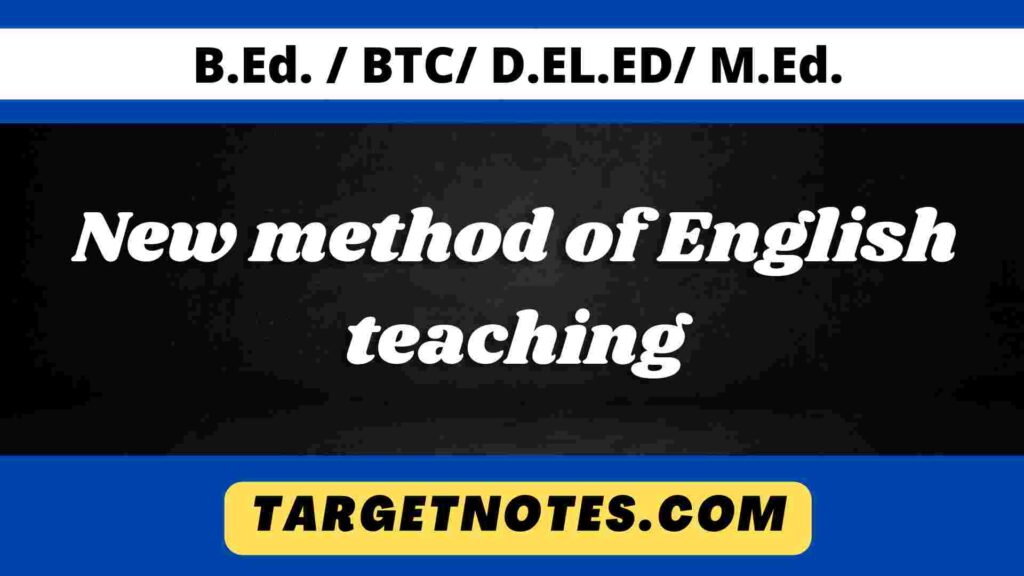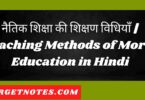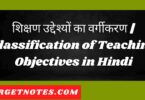
Describe new method of English teaching.
Contents
Dr. West’s New Method or The Reading Method
Just as the Direct Method was a reaction against the traditional Translation-cum-Grammar Method and suggested improvements upon it; in the same way, Dr. West’s ‘New-Method’ is a reaction against the Direct Method and suggests some improvements upon it. Instead of laying emphasis on the training of speech habits Dr. West’s lays emphasis on training the reading habit.
The Principle Studied- Dr. West believes that Indian pupils require the ability to read English; for them writing is secondary. They will have less opportunities of speaking English. The child, who has come to school and if he is trained in the right sort of reading, however earlier he may leave, will surely benefit from permanent value from this purposeful reading. This reading, he proposes, should be silent and not oral. He has taken this fact in view that most of the Indian pupils leave their schools even before completing the prescribed years for a particular stage. Therefore, they must learn something of English which may be of permanent value to them in their later life. Dr. West calls it the “Surrender value”. Surrender value as Dr. West explains that it is the proportionate amount of benefit’- which a pupil derives from attending and incomplete course of instruction. Suppose a pupil leaves his school after passing his VII class. This means that he is a drop-out. He must, thus, learn such vocabulary of English which is useful to him in his practical life. He will learn this vocabulary not by training in speech but by silent reading. Since he has “surrendered” the remaining years of his high school education the period he has spent at school must be able to teach him useful vocabulary after his school life.
The Reader – Dr. West believes that the reading ability can be improved in solitude without the help of a teacher. The pupil should be initiated to read with case and derive pleasure from his reading. West provides a new type of reading book. His Reader has enough interesting matter for reading. The vocabulary is controlled. West desires that the thought getting must proceed at as rapid and even a pace as it is possible. Therefore, the size of the vocabulary is limited. This vocabulary is selected according to the mental age of the pupils. It contains common words that frequently find place in the learning process of the pupils. New words and phrases are evenly distributed over the pages. This vocabulary is non-technical in nature. The Readers serve “as an introduction to the later reading of adult life.” When a word is introduced for the first time, it is repeated for a number of times. This repetition makes the new word familiar. In order to ensure that the children have learnt this vocabulary, the teacher is to test their comprehension. This test should be based upon linguistic lines. j.e., the use of this yocabulary should be in accordance with their capacity to use them. These Readers are well-illustrated by pictures in order to explain the meaning of the reading material. Frequent use of the mother-tongue is allowed. As the primary object of the Readers is not the assimilation of the language, so “the linguistic material is not presented according to and clearly defined grammatical plan.” Dr. West is of opinion, (Grammar) is learned very much as grammar is learned by a child in acquiring his mother-tongue as a number of specific word habits.
Oral Reading- West considers that oral reading is preparatory to silent reading. “It gives reality to the subsequent reading.” But this reading ability can be acquired “without preliminary do some reading aloud from the very beginning. It is “useful for drilling correct pronunciation. work in speech or writing.” As reading involves “some inner speech”. Therefore, the pupil will West’s Reader serves this purpose for the teachers who are keen to start their English course with some speech training on a sentence method.” West believes that oral reading vitalized silent reading.
Reading and Language Learning- West is in line with Kirkman when he says, “reading language is by far the shortest road to learning to speak and write it.” He supposes that much ‘passive’ work should be done before the pupil advances for ‘active’ work. The term ‘active’ means the productive command of a language. It means to acquire proficiency of expressing oneself in it. ‘Passive’ means ‘a receptive command’ of a language. It means to understand it only. This ‘passive’ work will lay sound foundations for the ‘active’ work. Efficiency in reading at the initial stage of reading will enable children to acquire proficiency in speech and writing. They will be able to speak and write with speed and accuracy. In his view, it is not the use of excessive translation which is responsible for poor results but that we fail “to emphasise speed and facility in reading”. There is one more advantage of the passive aspect of reading. It forms the idea of the structure of a foreign language and a ‘feeling’ of the language. Therefore, when a child comes to the stage of self-expression in the language, he is safe to avoid all the possible errors.
Speech- His plea of the teaching of reading as distinguished from the teaching of speech, is based on the following arguments:
- The teaching of each skill requires a different technique.
- To acquire knowledge of reading is easier than to acquire a knowledge of learning to speak.
- It is neither safe nor wise to teach both skills at the same time in connection with the reading of a ‘Composite Reader’.
A ‘Composite Reader’ is one which provides “occasion for teaching all the different language skills under one over.”
Theory behind His Method- Dr. West explains the content of the text-books. These books, as has already been mentioned, should contain “a small but regular recurrence of new words in a maximum of connective tissues.” It will provide ease in reading and concentrate the child’s attention on the words rather than ideas. In order to give practice in the active use of language, maximum opportunities should-be offered for practice in the use of old and new phraseology with the minimum of connective tissue of already known words. This means, according to Dr. West, that in the first stage of learning to read a book of at least 360 pages would be needed, whereas in the latter case, “a book of twenty-five pages would suffice for drill book…” and help in “building up a conversational vocabulary of words most common in actual speech.”
The reading vocabulary will differ from writing vocabulary. “When we speak, we can use what word we please, and a small skilfully selected vocabulary may be adequate to express all our ordinary ideas. It may apply in self-expression for we will use that vocabulary which we have acquired or which we can use easily. But in reading, the case is different. We will have to get acquainted with the vocabulary used by the writers of English. We cannot choose. We cannot gain an insight into the structure of the language though we may learn to speak in ordinary words used in simple structures or idiomatic expressions. Gaining insight into the structures of the language is very necessary for its active use. It cannot remain limited when put to an active use. It has to be developed. It cannot be acquired by mere memorization. It needs specific practice. In other words, we may say that we have to acquire that linguistic capability which may help us to respond to speech situations, therefore the teacher is required to work out questions, orders or others forms of exercise which will enable the pupils to put their ideas into foreign words. This means an active use of language. He suggests that such responses “should not involve any new points of idiom, grammar or vocabulary…” The teacher provides opportunities to develop skill in speech. The teacher has to make his lesson more of the learning type’ than of the teaching type’ in order to gain a skill in speech.
In reading, our chief concentration must be on the vocabulary that is ‘frequently’ repeated and found by the pupil at the time of reading. But in the case of speech vocabulary, our concern will be with the ideas which the pupil will like to express. According to Dr. West “The ideal speaking vocabulary is the most easily learnt and most easily used set of words which is capable of expressing correctly largest number of ideas which one wants to express.” At the early stages, the pupil needs ‘minimum’ of exactness and elegance which can be allowed.
For this, he has grouped words under two main heads. It is by a process of elimination of the larger number of words that West feels that a minimum of 1,158 words are adequate for ordinary conversation. There is, of course, a provision in addition to it, for specialised words’. These words are :-
1. Form words. That is, words “which make up the form of language” and connect ideas and enable us to make statements. These are the words we talk with.
2. Content words. These are mostly nouns and pronouns. These are words we talk about. ‘Mayank goes to Delhi’ Mayank is a content word and goes to Delhi are ‘form words.”
He also gives a detailed description to show the use of speech vocabulary-how it can be drilled, how it can be presented to the pupils to secure an active response, how reading helps in fixing the phraseology and how written work can be correlated with oral work.
Credit Side of Dr. West’s New Method-
- Its chief emphasis in reading lies on silent reading. It develops comprehension and self-activity.
- It serves as a basis for active work in writing and speaking.
- It cultivates a taste for the study of short stories.
- Vocabulary is controlled. It is learnt easily. Frequent repetitions of the new words help in increasing the vocabulary of the pupils.
- It provides suitable devices of assimilation.
- It aims at the development of reading which is an essential aspect of language learning.
- It develops the habit of independent reading with understanding.
- Reading is free from phonetic difficulties and thus becomes easy.
- Facility in reading leads to the feeling’ and comprehension of the language.
- It is free from incorrect forms of speech of teachers in the lower classes.
- It is based on the principles of economy and practice. Teachers get thorough and definite instructions.
The Debit Side-
1. In my opinion, his procedure of cultivating reading ability before cultivating the ability of speech due to unfavourable circumsatnces in India is not sound. In fact, speech comes first. Reading follows it. Speech helps reading and reading helps speech. In order to follow the correct procedure of learning a language, we should first develop the speaking habit. If circumstances are unfavourable, these should be improved upon. For this, schools are to offer suitable opportunities for hearing and speaking. Teachers, well-versed in pronunciation, ought to be employed. It seems quite proper to add, “Children should not begin reading till they acquire facility in speech and a fairly large vocabulary.”
2. Dr. West draws a hard and fast line of distinction between speaking and reading. To maintain this distinction is not practically possible. I do not agree with Dr. West that speech hinders reading and other general abilities of self-expression. Professor Findly reviews West’s Bilingualism and remarks, decisive separation, between the eyes on the one hand and the lips, ears and hand on the other, is not psychologically sound.”
3. Pronunciation cannot be learnt, nor cannot be improved upon, if we lay undue emphasis on reading. Pronunciation is learnt by hearing and speaking and not by reading.
4. He ‘over-estimates’ the value of passive work because that is an aid to active work. I may admit for a while that much linguistic acquisition is possible with less conscious effort, if much reading is done. But the assimilation of the language can be fruitfully done by providing specific oral drill in the use of the language. Reading alone cannot be trusted in fixing up the phraseology.
5. Ability to speak a language is not comparatively difficult as Dr. West thinks. Practical experience shows that speech is easier and quicker than reading and writing.
6. The method requires a ‘detached’ study of words, their use in their respective situations and sentences is ignored. Thus, the method is not psychologically sound. It is unsound as it lays emphasis on conscious effort of the pupils and ignores the sub-conscious effort, their spontaneous capacities of hearing, articulation, comprehension and assimilation. Hence their interest is ignored.
7. A feeling of the language is not possible by silent reading alone. It requires specific drill in the use of language.
8. “The forced used of the mother-tongue and translation, the detached word-study the neglect of grammar and composition, the limited vocabulary, too much repetition, the neglect of idioms, inclusion of long stories for illustrating reading ability are some other defects of Dr. West’s new method.”
9. The method ignores the fourfold aspects of language learning, viz., to be able to hear and speak it, to understand it when spoken, to understand it when read and to write it. It simply enables one to read it. It does not suggest understanding in any form. Therefore, it brings about a one-sided development and presents a restricted view of language development.
10. The Readers planned by Dr. West also present a difficulty. They are bulky in the earlier stages and lighter in the advanced stages. This means that emphasis on reading and learning by reading will be laid more in the early years than in the later. The process must be the reverse of it. In the earlier years, the pupils should learn simple common words of every-day use. His work load should increase as he grows in age, experience and educational achievement. They should proceed from simple to complex. Hence, in learning English, the principle of ‘simple to complex should be practised.
11. Reading alone is not attractive for both the children and the adults.
12. The teaching of English will become dull and monotonous in case we pursue only one activity of Reading.
THE SUBSTITUTION METHOD
Palmer defines substitution as “a process by which any model sentence may be multiplied indefinitely by substituting for any of its words or word-groups, others of the same grammatical family and within certain semantic limits.” The substitution method seems to ‘substitute’ the Direct Method. But it is not due to this substitution that it has been named The Substitution Method.’ Its very procedure which we shall presently study, is the reason of its being called The Substitution Method.’
Procedure of the Method- The substitution method is best understood by its procedure. According to Palmer’s the first thing that we do in following this method is to select a model sentence. Why do we do it? We do it because it has been felt that the study of a word apart from its sentence does not help us in forming a sound and correct linguistic basis. Therefore, the unit of teaching must be sentence and not word. “A good start and repetition and practice helps us much in forming correct linguistic habits.” We have noted already how the child equips himself with his mother-tongue through repetitions and practice. The sentence unit teaching helps us to evolve a practical method. It is, then, agreed that the unit of our teaching should be the sentence.
What is a model sentence ? Some particular construction or idiom is taken and a sentence is framed using it. This sentence should be grammatically correct. Hence, if we desire to teach the use of the adjective ‘good’, we may have a number of sentences based on the model sentence.
Model sentence:
- He is a good boy.
Other sentences :
- Manoj is a good boy.
- She is a good girl.
- It is a good book.
- That is a good cat.
Interrogative and negative sentences can also be framed with these statements like :
Interrogative:
- Is he a good boy ?
- Is Manoj a good boy ?
Negative :
- He is not a good boy.
- Manoj is not a good boy, etc.
In our model sentence, we have a number of terms. One of these terms ‘good’ remains constant because the word ‘good’ is our teaching point. It is the basis of sentence construction.
We have changed the others. We have substituted Manoj, ‘She’, ‘It’, ‘That’ for ‘He’, we have also changed boy’ for ‘girl’ etc. In this way, we may ‘substitute for the ‘variables’ i.e., those terms which may be changed. By substituting these terms, we have framed many sentences. This process may go on by substituting for any of its words or word-groups.
Which word or words should change and which should remain constant ? The answer is, that the term which is the basis of construction should remain constant. For each of the other terms, we should substitute similar terms. We may take another example to illustrate.
“There are fifty boys in the class”. Well this is our model sentence, having four terms: there are’, ‘fifty’ boys and ‘in the class’. The basis of the construction of this sentence is: ‘There are’, and thus, it will not change. We may have the following sentences :
- There are fifty boys in the class.
- There are fifty desks in the class.
- There are ten pictures in the class.
- There are fifteen rooms in this school.
- There are twenty teachers in this school.
- There are several trees in the garden..
- There are many gardens in this city.
“Hence, the model sentence is used as a framework or mould and into this mould we fit other words or phrases.” (W. M. Ryburn). The pupils can “convert one fluent sentence into a large number of other equally fluent and idiomatic sentences.” How is this fluency possible ? This method provides facility for using the mother-tongue. Its equivalents, which comprise the meaning of English sentences comprehended by the pupils, are given. Care is taken to “avoid word for word translation.” The mother-tongue must. used to develop their expression. The sentence is the unit and the pupil gives a complete sentence in English expressing the same thought. In this way, the pupil learns to think in sentences and word for word translation is avoided.
Teaching with Substitution Method
Substitution is followed step by step. The first step, on the part of the teacher, is to plan well the basis of the model sentence (which is to be taught) and the idioms, words or group of words and make out grammatical model sentence, Prepare model sentences comprising their use.
Then he should thoroughly prepare a table or tables, as the case may be, illustrating the use of these words or group of words showing clearly the basis of construction of the model sentence and substitution of the term or terms i.e., the model sentence should be thoroughly mastered.
How to Master the Model Sentence – In the class, the teacher should proceed with the teaching of the model sentence. The teacher should speak the sentence clearly and in a natural voice which is audible to all the pupils. The sentence must be repeated a number of times. The teacher is to judge for himself the number of times this repetition is required. At first, he should be slow in speed and gradually raise it come to the normal speaking speed. The pupils will fix their attention on the pronunciation and intonation of their teacher. The pupils repeat the model sentence one by one. The teacher should look to their pronunciation and intonation. Repetition should continue till the sentence is spoken in the manner the teacher wants them to speak and that it is spoken “at a speed equal to normal speaking speed.” This is the test by which he can ensure himself that the sentence is really known to them. “The model sentence must become automatic.” If any word or group of words needs illustration, the same must be done. e.g., the model sentence is, “A bird is flying.” After repeating it three or four times I draw a sketch of a flying bird on the black-board and speak “Look, this bird is flying. A bird is flying.” Then I will add : Parrot is a bird. A Parrot is flying. I will draw the figure of a Parrot. Similarly, with crow, pigeon and other birds. I may finally say, “All the birds are flying.” The inductive method of proceeding from particular to the general is adopted.
Reader- A word of caution will not be out of place here. The model sentence should be, as far as possible, chosen from their text. In all teaching, ‘the basis of instruction’ should be their Reader. Use a well-graded Reader and your substitution model sentences will be automatically graded. Another word of caution is that you should not introduce too many new words in framing tables. See the illustration given above. As far as possible, these sentences should refer to the subject-matter of the lesson from which the model sentence is taken. It will help you to proceed gradually and a chain of thought will be developed in their minds.
Mother-Tongue- The model sentence is introduced and several times repeated by the members of the class individually. The teacher corrects the faulty pronunciation and gets it spoken with speed. The next step is to give its equivalent in the mother-tongue. Beginning should always be made with easier, sentences so that sentences in English and in mother-tongue are apprehended by the pupils and they may be able to extend their co-operation. When the sentence in the mother-tongue is given, he must come back to the original in English and the sentence should be repeated, avoiding word for word translation, Repetition of the sentence in English should continue until it becomes automatic on hearing the vernacular one. The idea underlying this repetition is that the sources of English are foreign to the pupils. When he repeats a model sentence, say, two or three times, the children hear it attentively and also repeat it silently so that when they are asked they may reproduce it with ease and facility.
Then the teacher writes the sentence on the black-board and proceeds with the substitution. The example I have cited above, needs further elaboration. There are twenty boys in the class. The construction of the substitution table will be a round there are’ and thus this will remain constant. The next term is ‘twenty’. It is the first numerical which may be substituted for ‘four’, ‘five’, ‘six’, ‘seven’, ‘no’ (none), or any other numerical. Then we may to substitute ‘boys’, with ‘desks’, ‘class’, ‘pictures’, ‘chair’, ‘rooms’, ‘peons’, ‘windows’, ‘doors’, ‘teachers’, ‘flowers’, trees’, etc. Similarly, the last term may be substituted: ‘in the school,’ ‘in the garden’, ‘in the lawn’, and so on. On every step following the substitution, the equivalent in the mother-tongue should be given. These sentences in the mother-tongue may fetch their English equivalents from someone. The words used to denote substitution will be written on the black-board. The substitution of one term should be completely done and it is only then that the teacher should proceed to substitute the second and the third term. The sentence, both in English and Hindi must be read together to avoid any resemblance with liberal translation.
The fourth step is to mix up the terms in any way you please. You like to make as many different combinations as you like and drill in the class in the completed table. Give sentences to the class; ‘Nagar men pachas school hain’ (There are fifty schools in this city), ‘Kitab men sau kagaz hain’ (There are hundred pages in this book). ‘Tumhare ghar men panch admi hain’ (There are five persons in your family), etc., and get English equivalents for any combination you can think of.
The last step is to use such sentences in conversation as soon as there is opportunity for it. The tables may be copied by the pupils-English on the one side and their equivalents in their mother-tongue on the other side of their note-books.
Types of Substitution-
There are three types of substitutions :
1. Simple Substitution Tables- Such tables are those in which we have the variables interconnected. For example, This table is made of wood. This chair is made of wood’. ‘This watch is made of gold’. This book is made of paper’. This pent is made of cloth. This purse is made of leather.’ etc. In such sentences, we cannot say “This chair is made of leather, or This shoe is made of wood’. Chair and wood, book and paper, shoe and leather, cannot be separated. Constructions like these lend themselves to simple tables.
2. Compound Substitution Tables- Such tables are those in which variables are interchanged. I have given examples, illustrating the procedure of substitution.
3. Grammatical Substitution Tables – We can teach grammar through such tables. It is through such tables that we can make use of the points of contrast and similarity in the mother-tongue and English grammar. I have already given an example of an adjective good. We may proceed with the teaching of comparative and superlative degrees of Adjective also. Then, by way of similarity, or contrast, distinction between present indefinite and present continuous may be taught. ‘Ram walks’ and ‘Ram is walking’. The use of ‘can’ and ‘may’ ‘shall’ and ‘will may be successfully done by these tables.
Demerits- But this does not mean “that all grammar can be taught in this way. Explanation of rules must be given”. i.e., we can give practice in rules by these tables. We cannot explain them as explanation is required at the senior stage. And this is true also. We cannot teach prose, poetry and rapid reading by it. Only too many isolated sentences other reading material can be taught by these tables. Their sequence is lost. One more demerit of this method is that it takes too much time to form the linguistic habits.
IMPORTANT LINK
- The Natural of Direct Method of English Teaching
- Advantages and Limitation of Direct Method
- New method of English teaching
- Methods of English Teaching | The Translation-cum-Grammar Method | Merits and Demerits of the Method
- General and Particular aims and objectives of English teaching






